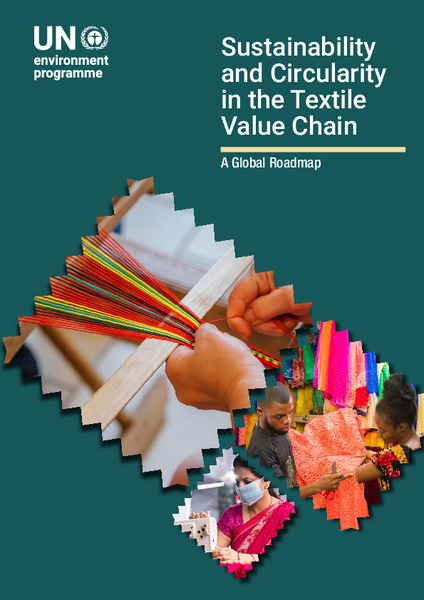Sustainability and Circularity in the Textile Value Chain - A Global Roadmap Textile Value Chain

Date
2023-05Author
United Nations Environment Programme
Citation Tool
Bibliographic Managers
RT Generic T1 Sustainability and Circularity in the Textile Value Chain - A Global Roadmap Textile Value Chain A1 United Nations Environment Programme YR 2023-05 LK https://wedocs.unep.org/20.500.11822/42580 PB AB TY - GEN T1 - Sustainability and Circularity in the Textile Value Chain - A Global Roadmap Textile Value Chain AU - United Nations Environment Programme Y1 - 2023-05 UR - https://wedocs.unep.org/20.500.11822/42580 PB - AB - @misc{20.500.11822_42580 author = {United Nations Environment Programme}, title = {Sustainability and Circularity in the Textile Value Chain - A Global Roadmap Textile Value Chain}, year = {2023-05}, abstract = {}, url = {https://wedocs.unep.org/20.500.11822/42580} } @misc{20.500.11822_42580 author = {United Nations Environment Programme}, title = {Sustainability and Circularity in the Textile Value Chain - A Global Roadmap Textile Value Chain}, year = {2023-05}, abstract = {}, url = {https://wedocs.unep.org/20.500.11822/42580} } TY - GEN T1 - Sustainability and Circularity in the Textile Value Chain - A Global Roadmap Textile Value Chain AU - United Nations Environment Programme UR - https://wedocs.unep.org/20.500.11822/42580 PB - AB -View/Open
Item Statistics
Display item statisticsMetadata
Show full item recordDescription
This report defines ‘textiles’ as all products that contain knit or woven textile components, primarily composed of apparel and footwear, but also including home textiles, technical, medical and automotive textiles, etc.
The main report is intended as a general summary of challenges, opportunities, solutions and next steps for a sustainable and circular textile value chain. It outlines nine building blocks that specifically explore the cross-stakeholder opportunities for change,
and how collaboration can be facilitated to deliver them, highlighting examples of actions for those stakeholders that are most crucial or influential for each building block.
The report provides examples of initiatives, commercial companies, products and other work that serve as an illustration of tackling different sustainability aspects, but should not be read as an endorsement by UNEP or an “end state” example of
circularity in the textile value chain.
Collections
Document Viewer
To read more, scroll down below.

